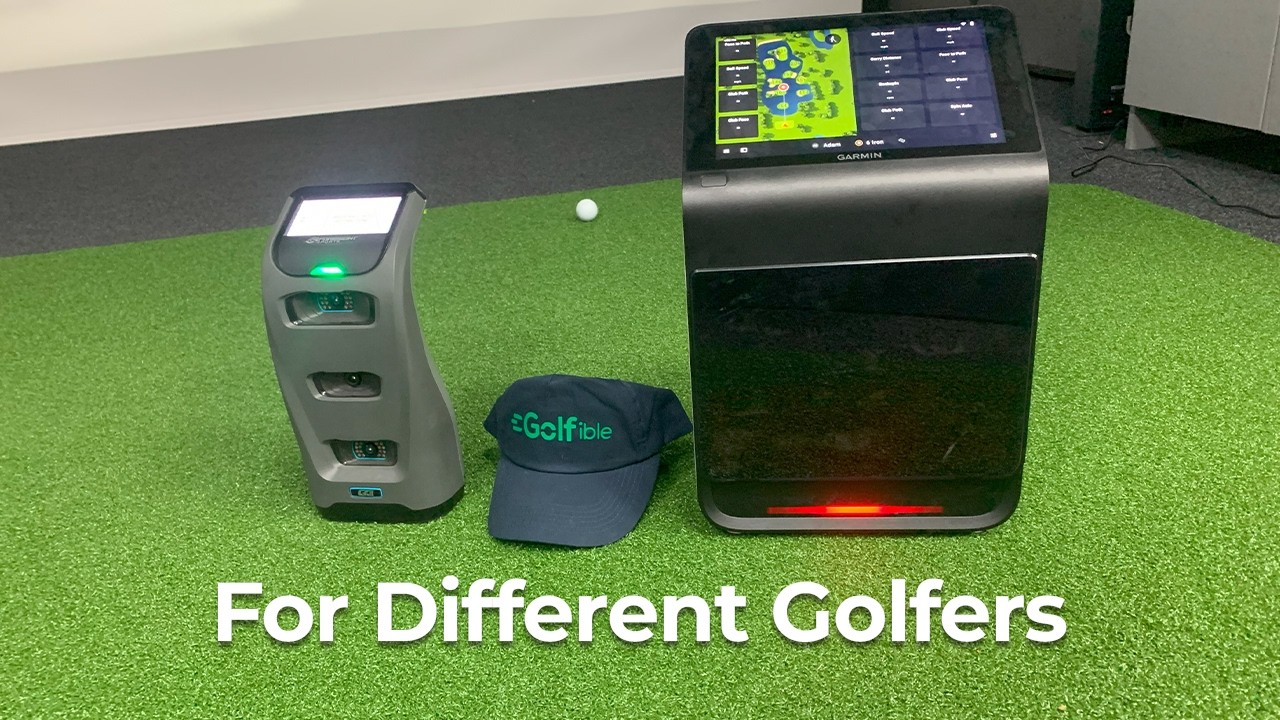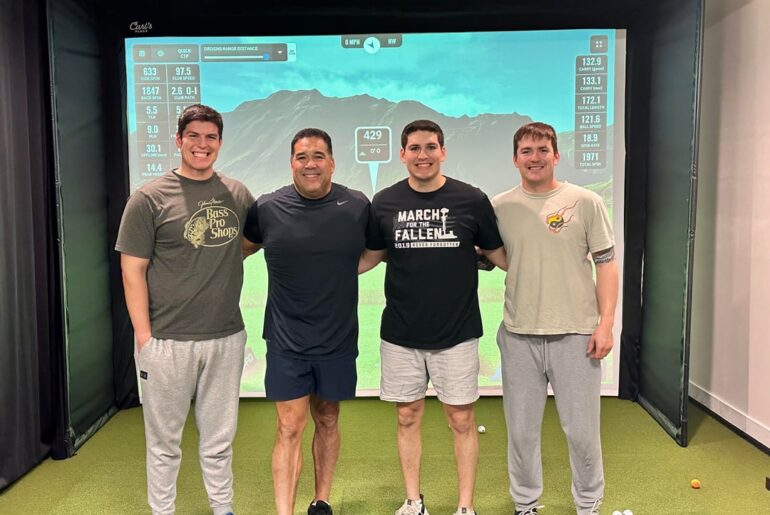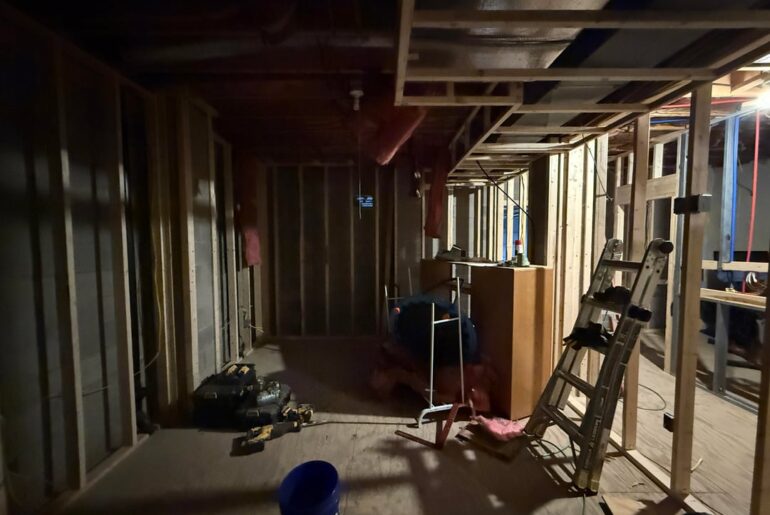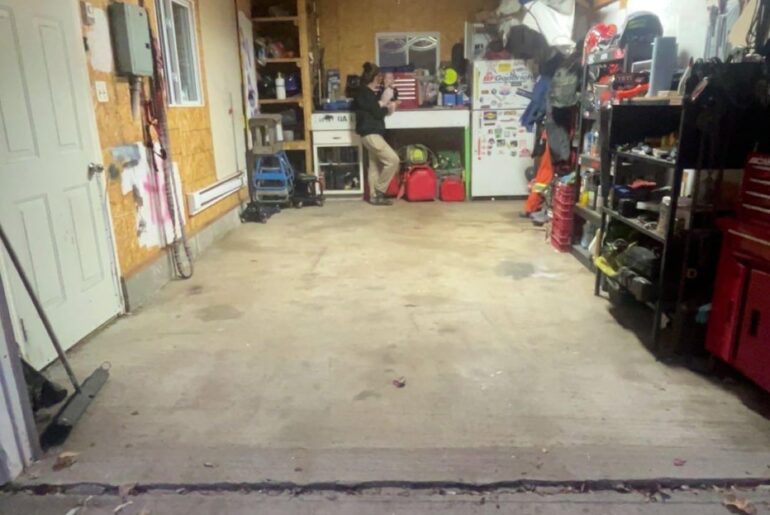Garmin R50 vs Foresight GC3 and GC3s: Can It Compete with Both?
The forums are flooded with questions about the GC3 versus the R50. What’s better for game improvement? What’s better outdoors? What’s more accurate? It does look like the R50 will be a serious competitor to the GC3 going forward. So, let’s see how they compare in all these areas. We’ll also compare the R50 against the GC3S, which is the cheaper subscription model of the GC3 where relevant. Here’s a quick rundown of our Golf Tech review rules before we start. We try not to give any empty praise. So we avoid buzzwords like it’s amazing or it’s a game changer. Equal focus on the flaws. Sort of good and the bad at equal air time. And we try to give practical takeaways. So how will this device improve your game? Okay, so this is the big selling point of the R50. It doesn’t need a supported device like a PC or an iPad to play virtual golf. You can do everything on the R50 inbuilt screen, including playing virtual courses. You’ve got this 10-in color touchscreen which works like an iPad. Navigation and the design is modern. Everything’s laid out in an intuitive way. The screen can easily be read in dark or bright sunlight outdoors. And the touchcreen technology is as responsive as an iPad. You can customize the interface to show different features at once in a split screen like this impact video in the virtual range on the screen. Now you can connect to HDMI cable and show different displays on the external screen to the R50 screen. Shot data also appears less than a second after you hit the ball. One issue that annoyed us is the R50 doesn’t connect to a third-party device like a PC or iPad at all. You can’t control what’s on the R50 screen from an iPad or PC, which means you have to bend down to the unit to make adjustments. Now, you can still play third party simulators like GS Pro wirelessly with the R50. But right now, there is no integrated app that lets you control the R50 screen with an external device. The GC3 GC3S built-in screen is a monochrome LCD. It’s not a color touch screen and you will need to scroll manually to see all of your data metrics. It won’t show them all at once like the R50. The monochrome screen can be hard to read sometimes if you’re in bright sunlight. But the big advantages that GC3 has over the R50 is the connected apps that lets you play GC3 software from your PC or an iPad like FSX Play for the virtual courses and FSX Pro for challenges and practice. You get customization like reordering your data metrics like on the R50 and you can change camera views without having to bend down to adjust the unit. You can do all this as you play. Shot responsive is also under 1 second with the GC3 and the navigation is pretty straightforward. One issue we would have with the GC3 is the user experience can be a bit tiresome as there are multiple apps to use like FSX Play or FSX 220 and FSX Pro. They should really stream like these and make them all one app for simplicity. The R50 has a more modern interface, but having to crouch down to adjust it is a downside. So, even though the GT3’s interface isn’t as modern, I’m going to call this a tie because of its app compatibility. A quick heads up, our golfable website has two free tools to help you find the launch monitor that best fits your needs. Use our filter tool to instantly find monitors with the exact features you want, like built-in display, for example, and it’ll show you which launch monitors have that feature. Click the compare button to compare up to four launch monitors side by side in our comparison tool or you can see every feature at a glance. Both tools are linked in the description. Now, back to the video. You won’t spend much time setting up either unit indoors or outdoors. They both have a smooth process that’s simple to follow. Alignment is done with the dual ball method on the R50 screen, which uses the positioning of two golf balls to help it align correctly. The GC3 needs a physical alignment stick, which will be more precise than the dual ball approach, but it will take a little longer to get right. Finding the hitting zone is really easy on both devices because the built-in screens show you where the ball needs to be. An area where the Approach R50 falls down though is the hitting zone size. For ball data only, it’s a good size as you can get 11.25 in in length by 8 in width of hitting zone. But if you want to see club and ball data, the hitting zone shrinks to 3.75 in in length by 8 in width. Now, that isn’t much space to work with, especially outdoors if you’re taking divots. That small hitting zone can quickly become a mess, so you need to move the unit a bit. Not as much of an issue inside, but your mat will get worn down a bit. The GC3 hitting zone is 7 in length by 10 in width. So, the length zone is almost double that of the ball and club that is zone of the R50. They do have the same indoor space requirements as boulders are set up for the side of the golf ball which means they need around 10 ft minimum in room depth to work comfortably for the GC3 GC3S. If you want to see virtual range or courses and all the data metrics on one screen then you will need to connect to foresight’s app on the PC or iOS and that’s going to take a little longer than R50 which has everything on the built-in screen. The R50 also makes it easier to see gameplay on a big screen as they have an HDMI cable which connects directly to a TV projector. GC3 GC3S doesn’t have a HDMI. So overall, I’m going to give the setup win to the Garmin R50 because it’s slightly quicker and smoother. So here’s the 20 metrics you’re going to get with the R50, including the key club data metrics like face to path. On the GC3 GC3S, you’re going to get these 11 data metrics. Now, here’s a quick look at the data each launch monitor doesn’t have that the other launch monitor does. The R50, for example, has the face angle and face to path, and the GC3 is missing these metrics. Face angle and face the path together determine both the starting direction and the curvature of your golf shot. So, understanding both is key to diagnosing and fixing wayward shots. Having all of these club data points is usually reserved for Trackman 4 or GC quad premium 15 to 20k launch monitors. So having these is probably one of the biggest benefits of the R50 because face angle and face the path help you fix errors in your swing and it has more metrics in general than the GC3. I’m going to give the win here to R50 for that metrics. The Garmin R50 comes with home to Hero which gives you access to over 43,000 courses from Garmin’s GPS database. That’s pretty much every course in the world, including your local one. We’ve tested it and even the smallest local courses showed up. So that means you can actually practice on your home course anytime you want. For most of us, there is no auto launch monitor that will let you play at your local course. It’s going to help you visualize and plan shots for specific holes. It can give you an advantage and it will help decision-making during real rounds. The Home to Hero graphics are not as immersive as a GS Pro or GC3’s FSX Play software for that matter. The core is pretty simplified. It’s missing some finer details like realistic textures, but still it’s very engaging to play and has improved a lot from previous versions. Now, if you want more realistic simulation, the R50 also supports GS Pro E6 and Awesome Golf. You just need a gaming PC or an iPad and you can connect wirelessly. Meanwhile, the GC3 is using FSX Play or FSX 2020 for its simulation. You get 25 courses included, but only with the GC3, not the GC3S, which will give you the first year free, but then requires a $500 subscription. And that’s why it’s a cheaper product. The courses included are not household names, though. You have to pay additional one-off fees of between $150 and $200 to unlock famous courses like St. Andrews or Spy Glass Hill, which is kind of disappointing. The graphics and ball physics on FSX Play are better than Home Tero, as I said, but we wish more reward courses were included. You will need a gaming PC to play FSX Play, so it has very different requirements to the all-in-one R50. Most people we know usually combine GC3 with GS Pro, which has official integration. So, the GS Pro and GC3 combination is arguably the most popular integration for virtual golf right now because of GC3’s accuracy and GS Pro’s gameplay. For the comparison though, I’m going to give the win to R50 because of the core selection compared to GC3 and the fact that you can play local courses. Let’s start with what the R50 is doing well. First, visual feedback is its strength. You’ve got a ball impact screen that shows you exactly how the club and ball have connected from both a top view and a side view. So, when you combine that with the key swing data like face angle and face the path, you’re going to get a full picture of your swing. There’s also the impact video feature which captures your strike at the exact moment of contact from a sideon angle. Now, on its own, it’s not that detailed, but when you pair it with the ball impact graphic and swing data, it does become a useful tool for understanding your swing mechanics. You’ve got a standard virtual range and the target ranges so you can aim at specific targets and work on your distance control and your shot placement, but it is lacking any other game improven tools. I thought skills challenges or club fitting tools would be included at this price point and your data from sessions can be reviewed on the Garmin app, but it’s not very detailed. You have very little data visualization, no dispersion circles or club comparison tools, and it’s just limited data filtering features, too. For the GC3, GC3S within FSX Play software, you get built-in target challenges like closest to the pin. You’ve also got fun drills like inside 6 ft on FSX 2020 where you can try and land 10 shots within 6 ft of the pin to level up, which is helpful for your accuracy. You can do deeper, more database training in FSX Pro, which offers you a driving range built for shot analysis. All of the GC3 software includes detailed dispersion maps, sideby-side shock comparisons, and 3D ball flight renderings. So, they have filters for club, ball, and sessions. So, there’s a lot more detail than the R50. Like the R50, the GC3 also has a ball impact graphic, so you can assess it, but it will be missing some important metrics like the face angle and face to path. FXX Play and FXX 2020 will integrate with swing cameras too, so you can watch your swing from multiple angles in slow motion to identify issues with your swing. And Foresight have added something called link enabled technology which connects your GC3 and GC3S to a bushel rangefinder which actually uses your shot data to make club recommendations and shows shot dispersion patterns. And with the GC3S that rangefinder is included out of the box. Now, personally, I wouldn’t see much use in that, but it is something that some people might be interested in. Right now, there’s just more to work with for improving your game with the GC3. So, that takes the win here in game improvement and the fun features. The GC3 and GC3S main difference is in their pricing models. So, we will split their comparisons against the Garmin R50 into two parts. First, the GC3 will cost you $7,000 for ball and club data with no subscriptions versus $5,000 for the R50. So, what do you get with the GC3? You’re going to get access to all of its features like the 25 virtual courses on FSX play with the full ball and club data metrics, game improvement features and the fun features like closest to the pin and the virtual reins and FSX Pro and the Bushnal rangefinder is included. For the R50, you’re going to get the virtual range allmetrics and the visual feedback tools like the ball impact graphic screen and impact video included out of the box. The R50 does have subscriptions, but they are low considering some competitors like the GC3S, which we will come to shortly. $99 per year or $10 per month gets you access to all the virtual courses on Home to Hero, and that’s the only feature upgrade right now with the R50 subscription. There is a lot more coming your way in terms of software and features. So, I’m going to give the win here on pricing to GC3. GC3S is priced differently at $3,799, which is a lot cheaper than the regular GC3 price. The GC3S requires a $500 per year subscription to unlock most of its features. And without that ongoing subscription, you’re only getting your data like ball speed carry distance on the built-in screen. So it’ll be no virtual golf and no connection to your PC or iPad. Now, the good news is the first year of subscription is included for free. So for $3,800, you’re going to get a year’s access to those features we listed earlier for GC3. And after that first year, you’re going to need to pay that $500 annually to keep access. But even when you factor that in, it would take a few years for the GC3S to match the price of the R50. And you’re getting a lot more for your money right now. So for pricing and value, the GC3S is also the winner. The R50 and GC3 can’t be tested side by side because their tracking systems interfere with each other during shots, and that’s been shown in lots of videos. Now, the GC3 and Foresight in general is the industry leader for launch monor accuracy. So instead, we just focused on the R50 with our pro golfer, testing how consistent the readings were. We looked at shot shape outdoors, which matched what the R50 virtual range was showing. Slices and hooks were getting picked up by the R50 and matching realworld ball flight. And our pro golfer didn’t have any shots where he questioned the ball flight. Really carry distances for drivers, irons, and wedges were in a consistent range, matching our pro golfer’s numbers, and spin numbers were not showing any strange outliers for high-spin wedge shots or high-speed driver shots. The main issue was putting in Home T hero. We used picks, golf balls for putting, but it felt like the green speed settings were off. Putts were too fast or too slow and putting off the green was a bit of a mess where the reduction in power was far too high for just off the green. Even though the metrics the R50 was showing were consistent and reliable for the most part, as a new technology, it can’t compete with the GC3 right now, which is the benchmark for accuracy. So, the win here is going to GC3. The R50 has lots of strengths indoors, but I do think it’s lacking some game improvement features that hopefully they will add soon. The GC3 gives plenty of different options to improve your game within FSX Play 2020 and FSX Pro. And GC3 paired with GS Pro is the top virtual course gameplay on the market right now. The Garmin 50 has those 43,000 courses, and no other monitor can offer virtual courses on a built-in screen of the unit. But if you want to play GS Pro, you will need a gaming PC since the R50 won’t run anything other than Garmin software natively. And it’s unlikely that GS Pro will ever be added to the R50 as it would need a graphics processing unit or GPU that you find in gaming PCs. You can also control the GC3 from an app or PC or iPad unlike R50. And for these reasons, I’m going to give the win to indoor play to GC3 and GC3S. Outdoors, the R50 is a far bigger and less portable launchp than the GC3, but we actually prefer it. You do have a carry case included. If you’re bringing outdoors, it does read shots accurately from the grass and mats. You can read all your metrics from the R50 color screen on one page. For the GC3 built-in screen, you need to scroll manually on the unit to see ball and club data. Now, you could use the Foresight app, but it can be inconsistent at connecting, particularly when out in the course or with bad signal. It can be tricky to use. As you can see from its review ratings here, the screen is far easier to read in direct sunlight on the R50 or when it’s dark than the GC3. Now, one weakness would be the smaller hitting area for club and ball data. And the R50 battery life is 4 hours versus 5 to 7 hours for the GC3, but overall it’s better at the range for us. And also on the course, if you have space to carry it in your golf buggy, for example. So, we’re going to give the win here to outdoor play to the Garmin R50. I do think the R50 will add more game improvement tools in the future, so it could be a more advanced launch monitor 6 months from now. Check our linked comparison article to see any updates on these launch monitors. And you can use our filter comparison tools to help you narrow down your choice based on what features matters to you. Or check out the next review on the screen now.
🔍 Our Filter Tool – Instantly filter by key features ➡️ https://golfible.com/launch-monitor-filter-tool/
📊 Our Compare Tool – View features side by side ➡️ https://golfible.com/launch-monitor-comparison/
🧠 Launch Monitor Quiz ➡️ https://golfible.com/launch-monitor-quiz/
——–
🇺🇸 Buy the Garmin Approach R50 launch monitor here: https://shopindoorgolf.com/products/garmin-approach-r50-launch-monitor-golf-simulator?aff=444&utm_source=affiliate&utm_medium=https://golfible.com/
🇬🇧 Use code GOLFIBLE5 to get a 5% discount on Garmin R50 here:
https://www.golfswingsystems.com/product/garmin-approach-r50/
🇺🇸 Buy the Foresight GC3 launch monitor here: https://shopindoorgolf.com/products/foresight-sports-gc3-launch-monitor?aff=444&utm_source=affiliate&utm_medium=https://golfible.com/
🇬🇧 Use code GOLFIBLE5 to get a 5% discount on Foresight GC3 here:
https://www.golfswingsystems.com/product/foresight-gc3-launch-monitor/
🇺🇸 Buy the Foresight GC3s launch monitor here:
Foresight Sports GC3S Launch Monitor
——–
=============================
Golfible Review Article
=============================
Updated Garmin Approach R50 vs Foredight GC3 / GC3s Review Article
Foresight GC3 and GC3s Vs Garmin Approach R50: Which Is Right for You?
——–
The Garmin R50 impressed us with its all-in-one design — you can play on 43,000 virtual courses straight from the built-in screen, no PC or projector needed. It’s super easy to set up, and the club data is surprisingly advanced for the price, with metrics like face angle and face-to-path that even some higher-end models skip. That said, you can’t control it from a phone or tablet, and the graphics aren’t as sharp or immersive as GC3 or GC3s paired with FSX software. The GC3 is more accurate overall and packed with game improvement features, while the GC3s gives you a lower entry price — though you’ll need a $500 annual sub to unlock everything. If you’re after simplicity and flexibility without giving up key swing data, the R50 is hard to beat. But if you’re more focused on realism, fitting tools, and deep analysis, the GC3 or GC3s might be worth the extra spend.
——–
⏰ Timestamps ⏰
0:00 Intro
0:22 Our Review Rules
0:36 R50 key selling points
1:19 Our issue with the R50
1:43 GC3/GC3s Built-In Screen
1:58 Advantage of GC3/GC3s
2:28 Issue with GC3/GC3s
2:52 Golfible.com Tools
3:31 Set-Up Comparison
3:48 Hitting Zone Size Issue
4:24 Indoor Space Requirements
4:34 Connecting to Apps and Screens
5:02 Data Metrics Comparison
6:01 Virtual Courses Comparison
6:49 Connecting R50 to GSPro
6:58 GC3/GC3s Virtual Course Selection
7:42 GC3/GC3s and GSPro
8:05 Game Improvement Features
8:52 Garmin App limitations
9:05 Foresight’s Challenges and Games
9:52 GC3/GC3s Swing Cameras
10:00 GC3/GC3s connects to Rangefinder
10:29 Pricing Comparison
10:37 GC3 vs R50 on Pricing
11:31 GC3s vs R50 on Pricing
12:20 Accuracy Comparison
13:29 Indoor Play Comparison
14:20 Outdoor Play Comparison
15:16 Closing Thoughts







